Beef production hits record highs as lamb and mutton turnoff slows
Australia’s cattle industry continues to set new benchmarks, with the latest Australian Bureau of Statistics (ABS) figures confirming record beef production for the September quarter.
At the same time, sheep and lamb slaughter has eased significantly following last year’s peak turnoff.
Meat & Livestock Australia (MLA)’s Manager for Market Information, Stephen Bignell said that strong seasonal conditions across northern Australia have underpinned the surge in cattle numbers.
“From January to September, Australia produced 2.16 million tonnes of beef, 13% higher than the same period last year,” Mr Bignell said.
“This quarter alone saw the highest cattle slaughter since 1978, and record beef production across key states.”
Cattle
Cattle slaughter reached 2.48 million head, up 6% on the previous quarter and 10% year-on-year.
Queensland led the charge, recording one of the largest quarters for processing ever, while New South Wales and Victoria also posted strong numbers.
Beef production hit a quarterly record of 759,270 tonnes, with New South Wales, Victoria and Queensland all setting new highs. Only Tasmania saw a slight decline.
Carcase weights remained steady at 307kg, slightly below last year’s average but consistent with seasonal trends. Female slaughter rates eased nationally to 53%, down from 54.5% in Q2, with reductions in New South Wales and Queensland following record highs earlier in the year. Western Australia was the only state to lift its female slaughter.
Sheep and lamb
National sheep slaughter fell to 2 million head, down 20% on the previous quarter and 26% below Q3 2024. New South Wales recorded the largest drop, falling by 190,000 head to 740,000, followed by Western Australia and South Australia. Victoria remained the largest turnoff state at 825,600 head, down only 5%.
Mutton production mirrored this trend, dropping 13% to 52,341 tonnes, the lowest since Q3 2022. Victoria was the only state to lift output, rising 5% to 19,816 tonnes, while New South Wales, South Australia and Western Australia all recorded double-digit declines.
Despite lower volumes, sheep carcase weights rose to 26.1kg, the heaviest since late 2023, with New South Wales averaging 28.2kg.
Lamb slaughter also eased sharply, falling 23% to 5.2 million head, the lowest since March 2022. Tasmania saw the steepest decline at 48%, followed by South Australia and Western Australia.
Production dropped 25% to 126,171 tonnes, the lowest since December 2021, with Victoria, the largest lamb-producing state, down 22% to 66,922 tonnes.
Carcase weights remained stable at 24.3kg, with slight lifts in South Australia and Tasmania likely due to increased grain feeding.
Mr Bignell said the contrasting weather patterns have reflected on the market dynamics.
“Cattle numbers are being supported by strong pasture conditions and herd rebuilding, while sheep and lamb turnoff is easing after last year’s peak,” Mr Bignell said.



